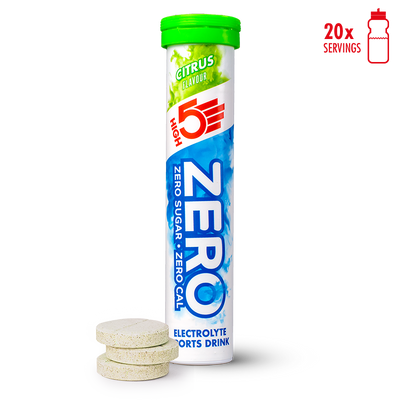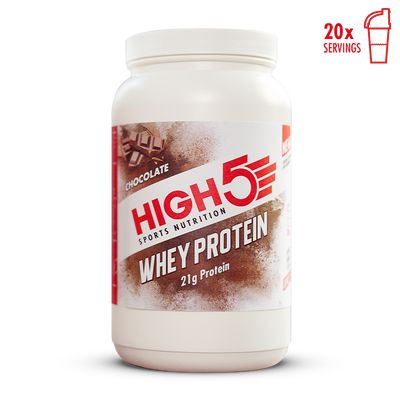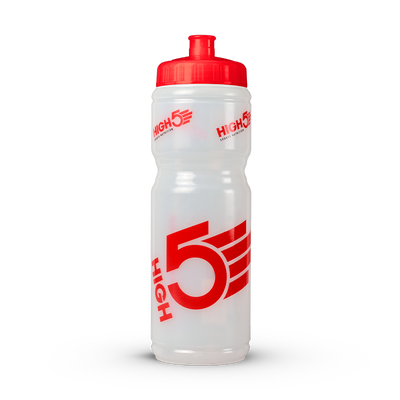In 2020 we launched a new energy range that provides you with longer-lasting fuel for sport.
HIGH5 Slow Release Energy was developed with pro cycling team BORA – hansgrohe to redefine endurance sports nutrition, as an alternative to the fast-acting energy products that are often used during sport. Since we launched the range, thousands of athletes are already benefiting from a more a stable and sustained supply of energy, but what is all the fuss about?
Carbohydrate energy extends endurance performance
It is common knowledge that a lack of energy (or fuel) limits endurance performance. Your body has two main energy sources: fat and carbohydrate. Fat fuel is for the “low power diesel engine”. It is not designed for performance and so it is slower to function, but it’s unlikely to run out of gas. On the other hand, carbohydrate fuel is for your “Speed Engine”, which provides quick release energy for optimum performance. Carbohydrate is your main energy source for higher intensity exercise and the go to fuel during sport.
But there is a limiting factor - your body only has enough carbohydrate stored to last around 90 minutes of strenuous exercise. It’s the reason you struggle later on in a ride or run, and you might even hit the wall if you run out of your carbohydrate stores completely. This means during longer endurance activities, you need to top up your carbohydrate stores to stay at your best and maintain your performance. There are lots of options available, like energy drinks, gels and bars, that will give you more energy for exercise lasting more than 1 hour.
With the introduction of HIGH5 Slow Release Energy, athletes now also have the choice between both fast-acting energy products and more sustained energy products to fuel sport. 
Fast-acting energy
Commonly used energy products are fast-acting, using high GI carbohydrates like maltodextrin and sucrose, which deliver energy to your muscles quickly. This is particularly useful towards the end of a race to help with the sprint to the finish line, or if you haven’t fuelled sufficiently and need a fast boost to keep going. It is also a great option if you want to maximise your carbohydrate intake, but it does mean regularly topping up to avoid the sugar crash. Using a 2:1 maltodextrin to fructose energy drink can provide you with up to 90g carbohydrate during endurance exercise for optimum performance.
Sustained energy and enhanced fat oxidation
Isomaltulose is a slowly digested low GI carbohydrate. It is different from fast-acting carbohydrates such as maltodextrin or sucrose as its digestion and absorption rate is much slower, resulting in a lower insulin release. Digestive enzymes break down Isomaltulose four to five times more slowly than sucrose because of a strong glucose-fructose bond. This in turn results in a slower release of glucose, slower intestinal absorption, and a longer-lasting fuel supply to the muscles. For athletes this means a sustained and stable stream of energy over a longer period of time, no sugar crash and better energy levels throughout exercise.

There is another huge benefit to fuelling with slow-release energy: low GI products like Slow Release Energy stimulate the body and muscles to use more fat. On the other hand, when you consume high GI products, you will generally use more carbohydrates for fuel.
As a result of the slower intestinal release, isomaltulose encourages a higher amount of fat oxidation in energy metabolism than fast-acting carbohydrates like maltodextrin or sucrose. Fat oxidisation is just a fancy way of saying fat burning! From a performance perspective, a higher fat oxidisation rate also means you can spare your carbohydrate stores for later on, for example the last stages of a cycling event.
Bring the energy
There is no doubt that fuelling with carbohydrate energy improves your endurance performance. There are benefits to both fast-acting and slow-release energy, depending on the situation. Pro cycling team BORA – hansgrohe have already incorporated HIGH5 Slow Release Energy into their fuelling regime:
“We use HIGH5 Slow Release Energy in training for example to reduce the VLamax (lactate building rate) and therefore increase the efficiency of a rider. When racing, the slow-release energy products are used in the first 1 or 2 hours of a race when the intensity is rather low, for sparing muscle glycogen and increasing efficiency of fuel supply again.”
- Robert Gorgos, BORA – hansgrohe Head Nutritionist
Key takeaways
- Both fast-acting and slow-release energy can be beneficial to athletes
- Fast-acting energy products are more suited for occasions where you need to get an energy boost quickly or want to maximise your carbohydrate intake
- Slow-release energy products will drop-feed your muscles for better energy levels throughout exercise. Start taking these early on during exercise (or before) and continue to eat and drink little but often
Ready to give it a go?
While focusing on your energy needs, don't forget the importance of staying hydrated. These quick rehydration strategies will ensure you're effectively replenishing fluids and maintaining peak performance during your workouts.
The Slow Release Energy Pack is a great place to start if you want to test our new range of products. It contains 2x gels, 2x bars and 2x drinks in a mix of all the available flavours. Get yours here.







